Introduction
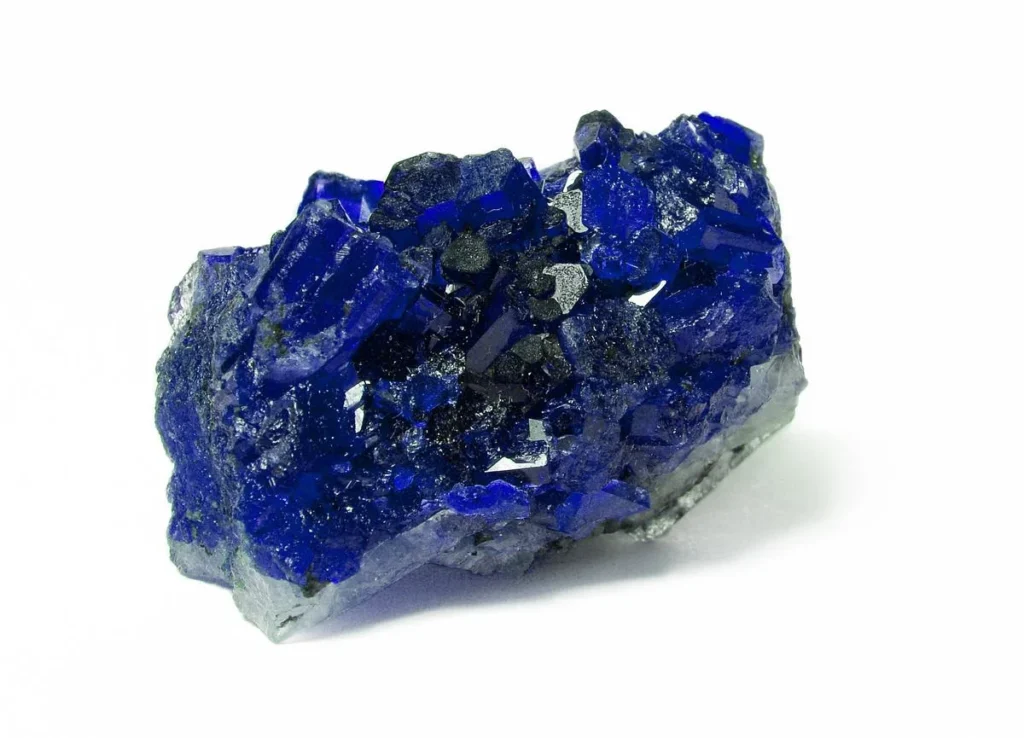
Kings and queens have adorned them, and their rarity contributes to their value. They complement various jewelry styles, making them a versatile choice.
This guide provides a comprehensive understanding of blue sapphires, offering insights into their history, characteristics, and quality factors.
It serves as a trusted resource for collectors, enthusiasts, and those looking to purchase or collect these precious gems.
What are the Blue Sapphires?
Blue sapphires are a variety of the mineral corundum, renowned for their mesmerizing blue color. Here’s a closer look at their origins and properties
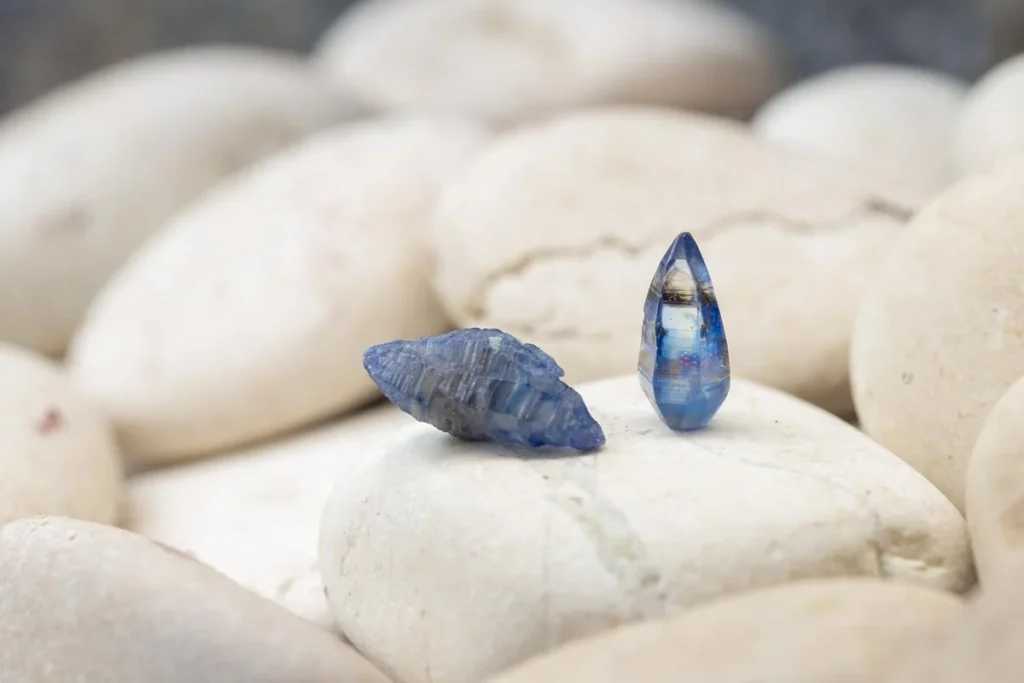
Origin:
Blue sapphires, originating from Sri Lanka, Myanmar, Thailand, and Kashmir, are now found in Madagascar, Australia, and various African countries.
Properties:
- Blue sapphires span a spectrum of blue shades, from pale sky blue to deep royal blue.
- The most prized sapphires display a rich, intense blue hue with excellent saturation.
- Sapphires are one of the hardest gemstones, ranking 9 on the Mohs scale, making them exceptionally durable for everyday wear.
- Blue sapphires are often cut into various shapes, with the most common being oval and cushion cuts.
- Their facets can enhance their color and brilliance.
- Highly transparent sapphires are particularly valuable.
Significance and Symbolism:
- Sapphires have been associated with royalty and nobility for centuries, symbolizing power, wisdom, and authority.
- They were often featured in the jewelry of kings and queens.
- Ancient civilizations believed that sapphires had a celestial origin, connecting them to the heavens and divine wisdom.
- Blue sapphires are often seen as symbols of loyalty, trust, and fidelity, which is why they are a popular choice for engagement rings.
- In some cultures, sapphires were thought to protect against harm and ward off negative energies.
- They were also believed to have healing properties.
- Sapphires are the birthstone for September, making them a meaningful gift for those born in this month.
- Blue sapphires are commonly associated with milestone anniversaries, particularly the 45th wedding anniversary.
The Four Cs of Blue Sapphires
The four Cs—Color, Clarity, Cut, and Carat—are essential factors to consider when choosing a sapphire. Each C plays a significant role in determining a sapphire’s appearance and value.
Color
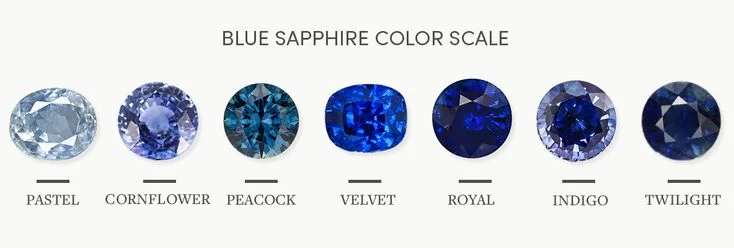
- Significance: Color is the most critical factor when evaluating sapphires. It significantly influences their beauty and value.
- Appearance: High-quality sapphires exhibit a pure, vibrant blue hue with excellent saturation. The most valuable sapphires have a vivid, intense blue color.
- Value: Sapphires with desirable colors command higher prices. The presence of secondary hues, like violet or green, can affect value.
- Balancing Act: Choose a color that appeals to your personal taste while considering your budget. You may opt for a slightly lighter or darker shade based on your preference.
Clarity

- Significance: Clarity refers to the presence of internal and external flaws, or inclusions, in a sapphire.
- Appearance: Higher-clarity sapphires appear more transparent and brilliant. However, most sapphires have inclusions.
- Value: Sapphires with fewer visible inclusions are more valuable. Eye-clean sapphires (with no visible inclusions to the naked eye) are highly sought-after.
- Balancing Act: A slightly included sapphire that appears clean to the naked eye can offer excellent value without sacrificing appearance.
Cut
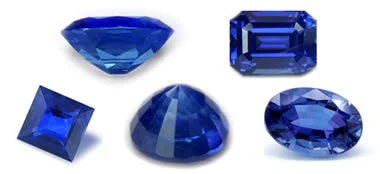
- Significance: Cut refers to the sapphire’s proportions, facets, and overall craftsmanship.
- Appearance: A well-cut sapphire displays excellent brilliance, sparkle, and symmetry. The cut can enhance or diminish the stone’s natural color.
- Value: A well-cut sapphire can fetch a higher price due to its superior visual appeal.
- Balancing Act: Opt for a cut that complements the sapphire’s color and maximizes its brilliance while staying within your budget.
Carat
- Significance: Carat measures a sapphire’s weight, which can affect its size and visual impact.
- Appearance: Larger-carat sapphires are more visually striking and may appear more valuable.
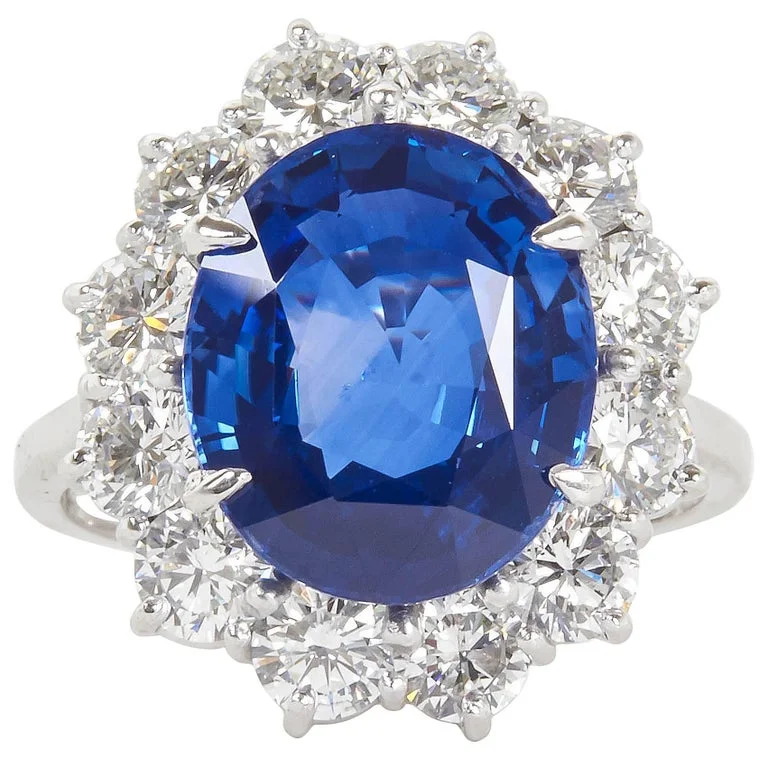
- Value: Larger sapphires typically command higher prices, but it’s essential to balance carat with other factors.
- Balancing Act: Consider a sapphire’s carat weight in conjunction with its color, clarity, and cut to find the right balance for your preferences and budget.
Recommendations
- Prioritize color and clarity if you seek a visually stunning sapphire. Look for a rich, saturated blue with minimal inclusions.
- Choose a well-cut sapphire to maximize its brilliance and overall visual appeal.
- If budget constraints arise, consider sacrificing some carat weight for better color and clarity.
- Remember that personal preference plays a significant role. Choose a sapphire that resonates with your taste and budget while balancing the Four Cs to create the perfect sapphire for you.
What are the Types of Blue Sapphires?
When choosing a blue sapphire, you’ll encounter different types based on factors like origin, treatment, and whether they are natural or synthetic.
Here’s an overview of these types and how to make informed choices:
Natural vs. Synthetic Sapphires
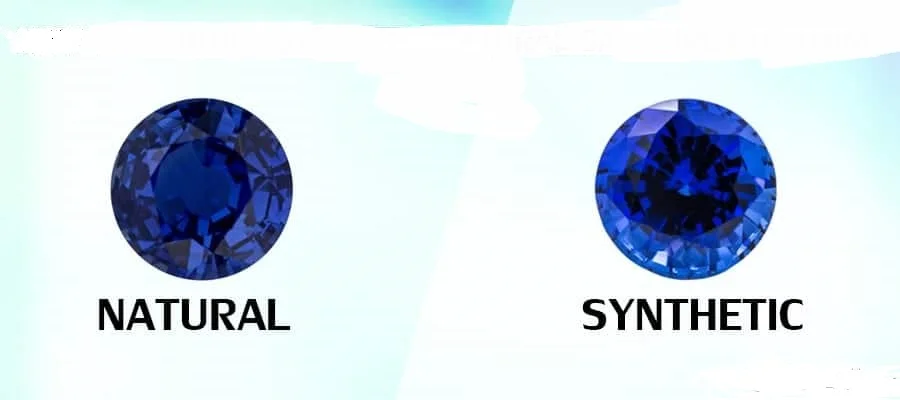
Natural sapphires, formed over millions of years, are highly valued for their rarity and historical significance.
They are ideal for heirlooms or investments.
Synthetic sapphires, also known as lab-created sapphires, are more affordable and offer consistent quality
Making them a popular choice for budget-conscious or eco-friendly options.
Origin
Burma (Myanmar):
Burmese sapphires, known for their deep royal blue color and exceptional quality, are highly regarded and command a premium due to their historical significance and beauty.
Ceylon (Sri Lanka):
Sri Lankan sapphires, known for their vivid blue hues and good clarity, offer excellent value for their quality and color, making them a great choice for those seeking quality without a high price.
Kashmir (India):
Kashmir sapphires, known for their velvety blue color and rarity, are highly valued and a prized investment due to their exceptional beauty and history.
Treatment
Untreated sapphires are natural, unaltered gemstones valued for purity, while treated sapphires undergo heat treatment to enhance color, clarity, fracture filling, and diffusion, making them more affordable and often displaying improved color.
How to Choose: Consider treated sapphires for their enhanced appearance and more budget-friendly options, as long as you’re comfortable with the disclosure of treatments.
Blue Sapphire Jewelry for Special Celebrations
Choosing sapphire jewelry for birthdays, anniversaries, and other celebrations is a thoughtful and meaningful way to mark special occasions. Here’s a guide on how to make personalized choices and pair sapphire jewelry with celebratory attire:
Consider the Occasion
Think about the specific event and its significance. For birthdays, you might opt for sapphire jewelry that incorporates the birthstone for that month. For anniversaries, consider sapphires to symbolize love and commitment.
Birthstone Significance
Sapphires are the birthstone for September. Gifting sapphire jewelry during this month adds a personal touch and connects the gift to the recipient’s birthdate.
Personalization Options
Engraving: Consider adding a personalized message or date to the jewelry to make it even more special.
Birthstone Combinations: Combine sapphires with other birthstones for a unique and personalized piece that represents multiple family members’ birthdays.
Matching with Celebratory Attire
For Formal events, Choose elegant sapphire necklaces, earrings, or bracelets to complement formal attire. Deep blue sapphires can add a touch of sophistication.
For Casual celebrations, Opt for simpler sapphire jewelry, like stud earrings or a delicate pendant, that pairs well with everyday or casual outfits.
For anniversaries, Consider sapphire rings as a symbolic representation of enduring love and commitment.
Color and Style
Pay attention to the color of the sapphires. While blue is the most common, sapphires come in a range of colors. Select a hue that resonates with the recipient’s preferences or complements their wardrobe.
Choose a style that suits the recipient’s taste, whether it’s vintage, modern, minimalist, or extravagant.
Jewelry Type
Earrings: Sapphire stud earrings or dangle earrings can be versatile options that suit a variety of styles and occasions.
Necklaces: A sapphire pendant necklace can be a timeless and elegant choice.
Rings: Sapphire rings, especially with meaningful engraving, are perfect for anniversaries and personal milestones.
Bracelets: Sapphire bracelets with delicate links or as part of a charm bracelet can be charming gifts.
Custom-Made Pieces
If you want something truly unique, consider having a sapphire jewelry piece custom-made. Work with a jeweler to create a design that reflects the recipient’s personality and style.
Birthstone Jewelry Sets
Create a coordinated look by gifting a set of sapphire jewelry, including earrings, a necklace, and a ring or bracelet. Sets make a statement and ensure that the recipient has matching pieces for various occasions.
How To Pick The Best Shade Of Blue
- The color of a sapphire significantly impacts its aesthetic appeal, symbolism, market value, and personal preference.
- Blue sapphires, often associated with loyalty, wisdom, and tranquility, have a deeper royal or cornflower blue hue, which commands higher market values.
- Selecting a shade that resonates with an individual’s taste ensures a lasting gem.
- When choosing a sapphire, consider personal preference, occasion, budget, and skin tone.
- Consider the recipient’s taste, budget, and compatibility with skin tone. Trust your eye and personal perception when viewing sapphires, and seek expert advice if unsure.
- Consider the recipient’s taste, occasion, and budget when choosing a sapphire. Match the shade with your skin tone, and trust your instincts when viewing sapphires.
The Most Famous Sapphires in the World
Some of the world’s most famous sapphires are renowned for their mesmerizing blue hues and rich histories. These sapphires have captured the imagination of people around the globe, becoming symbols of beauty, love, and history. Here are four of the most famous blue sapphires in the world:
The Star of India Sapphire
The Star of India Sapphire, originating from Sri Lanka, is a 563.35 carat blue sapphire, one of the world’s largest and most famous, and part of the American Museum of Natural History’s collection.
Princess Diana’s Engagement Sapphire
In 1981, Prince Charles presented Princess Diana with a 12-carat oval blue sapphire ring surrounded by diamonds, which symbolized love and royalty.
The Logan Sapphire
The Logan Sapphire, originating from Sri Lanka, is one of the largest faceted blue sapphires, weighing 423 carats, and is part of the Smithsonian National Museum of Natural History’s collection.
The Stuart Sapphire
The Stuart Sapphire, a deep blue sapphire with a rich history, has been a prominent feature in the Imperial State Crown of the UK, surrounded by diamonds and other precious gems.
Factors to Consider When Choosing a Blue Sapphire
When choosing a blue sapphire, several key factors should be considered to ensure you select a gemstone that meets your preferences and requirements.
Color and Right Shade
Choose the right blue sapphire hue, with excellent color saturation and a vivid, intense color. Consider secondary hues like violet or green, as they can enhance or detract from the sapphire’s beauty. Match the shade to your skin tone, with cooler-toned blues fitting fair or cool-toned skin.
Cut
The cut quality of a sapphire significantly influences its brilliance and appearance, ranging from classic round brilliants to elegant ovals or unique shapes.
Clarity
Assess sapphires for inclusions, natural flaws, or imperfections, which can be visible or invisible, and fewer inclusions generally result in a more valuable sapphire.
Carat Weight
Choose the sapphire size based on your personal preference and budget, as larger-carat sapphires can be more visually appealing.
Origin
Sapphire origins vary across regions, so it’s crucial to consider if the origin is significant to you and if it aligns with your preferences and budget.
Treatment
Various treatments, including heat treatment, which is common and widely accepted in the industry, may affect the sapphire’s value.
Budget
Establish a budget for sapphires to narrow down options and guide your selection, as they come in various price ranges.
Certification
Purchase a sapphire with a reputable gemological certificate for authenticity and details on its characteristics like color, cut, clarity, and carat weight.
Personal Taste
Choose a sapphire that aligns with your personal taste and style, as it should captivate your heart and make a meaningful, cherished piece of jewelry.
The Symbology and Traditions of Sapphires
Sapphires, a precious gemstone, have been revered in various cultures for centuries.
They carry symbolic meanings like wisdom, loyalty, and sincerity, making them a valuable choice for personal connections.
Understanding these traditions can enhance the sentimental value of sapphire jewelry, making it a cherished heirloom.
Sapphires are often tied to specific occasions or celebrations, and their cultural diversity enriches our understanding of their significance.
Ethical and sustainable choices can be made when purchasing sapphire jewelry, and sharing the story can create meaningful interactions.
FAQ’s
This Stone is highly protective and works like a shield.
Capricorn and Aquarius can wear blue sapphire with excellent positive outcomes as Saturn is their lord. Libra too has a cordial relationship with Saturn, but only when the latter is in the 1st, 4th, 5th, and 9th houses. For Leo and Scorpio ascendants, blue sapphire is generally not recommended.
Blue Sapphire, associated with Saturn, is believed to connect you with your destined life partner. This gemstone can help you overcome obstacles, attract stability in relationships, and align with karmic connections.
Yes, blue sapphires are a popular choice for engagement rings due to their durability and symbolism of fidelity. Princess Diana’s iconic sapphire engagement ring, now worn by Kate Middleton, has contributed to their popularity.
Yes, sapphires are one of the hardest gemstones, making them suitable for everyday wear, including engagement rings and other jewelry pieces.
Read more……..
